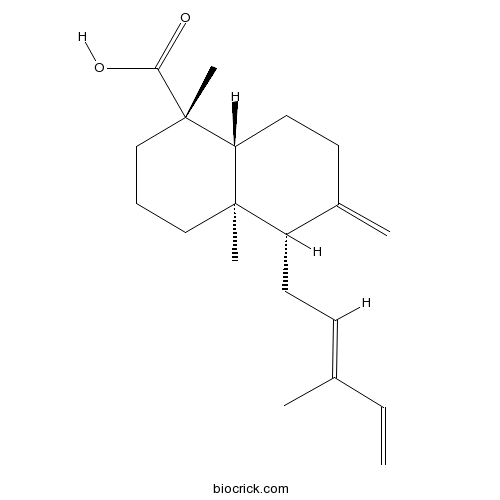InChI=1S/C20H30O2/c1-6-14(2)8-10-16-15(3)9-11-17-19(16,4)12-7-13-20(17,5)18(21)22/h6,8,16-17H,1,3,7,9-13H2,2,4-5H3,(H,21,22)/b14-8+/t16-,17+,19+,20-/m0/s1
Brown pine leaf extract (BPLE) and trans-communic acid (TCA) elicit reductions in UVB-induced MMP-1 mRNA expression and activator protein-1 (AP-1) transactivation by reducing DNA binding activity of phospho-c-Jun, c-fos and Fra-1, they also inhibit UVB-induced Akt phosphorylation, but not mitogen activated protein kinase (MAPK), known regulators of AP-1 transactivation, inhibit phosphoinositide 3-kinase (PI3K), the upstream kinase of Akt, in vitro; suggests that BPLE and its active component TCA exhibit protective effects against UVB-induced skin aging, these findings underline the potential for BPLE and TCA to be utilized as anti-wrinkling agents and cosmetic ingredients, as they suppress UVB-induced MMP-1 expression.[1]
Communic acid has antibacterial activity, including against mycobacterial.[2,3]
English website: Communic acid
Japanese website: Communic acid
Chinese website: Communic acid
[1] Huh W B, Kim J E, Kang Y G, et al. Plos One, 2015; 10(6): e0128365.
[2] Samoylenko V, Dunbar D C, Md. Abdul Gafur †, et al. Phytother Res, 2008, 22(12):1570-6.
[3] Carpenter C D, O Neill T E, Ellsworth K, et al. Planta Med, 2012, 78(11):1193-1193.



